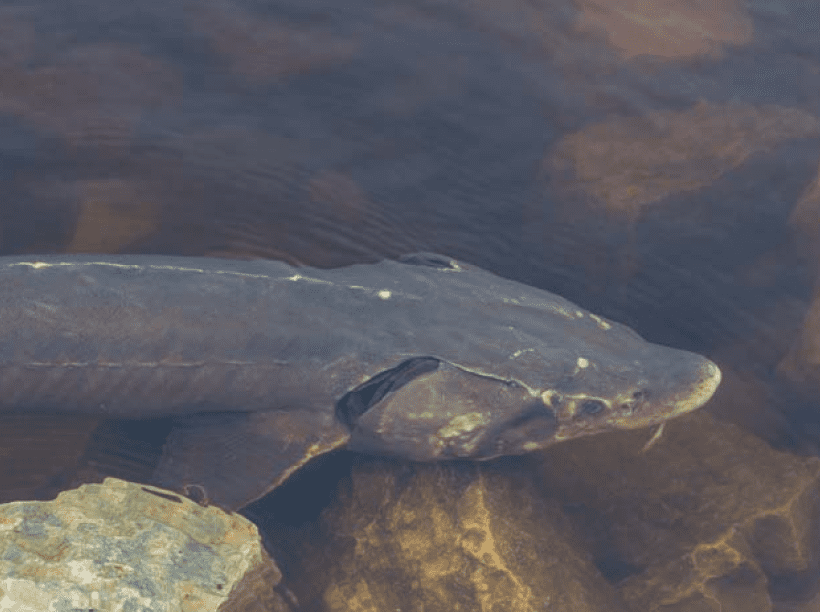Other names: -
The Atlantic sturgeon, Acipenser oxyrinchus, is a large, anadromous fish native to the eastern coast of North America. It is known for its bony plates and elongated body. This species migrates between freshwater and marine environments, and it is highly valued for its roe, which is processed into caviar.

![]() Length
Length
~200" (max 500)
![]() Weight
Weight
~150" (max 360)
![]() Water
Water
Fresh, salt, brackish
![]() Water Temp
Water Temp
13-26° F
![]() Depth
Depth
1-46 ft
Protecting
-
-
-
-
-
-
-
Atlantic sturgeons inhabit estuaries, rivers, and coastal waters.
They prefer sandy or muddy bottoms where they forage for benthic invertebrates.
Juveniles reside in brackish waters, migrating to the ocean as they mature.
Adults are highly migratory, often traveling long distances along the coast.
Spawning occurs in freshwater rivers during the spring and early summer.
Females lay eggs on gravel or rocky substrates in fast-flowing waters.
Larvae drift downstream to estuarine nurseries, where they grow before migrating to the ocean.
Sturgeons exhibit site fidelity, returning to their natal rivers to spawn after reaching maturity.